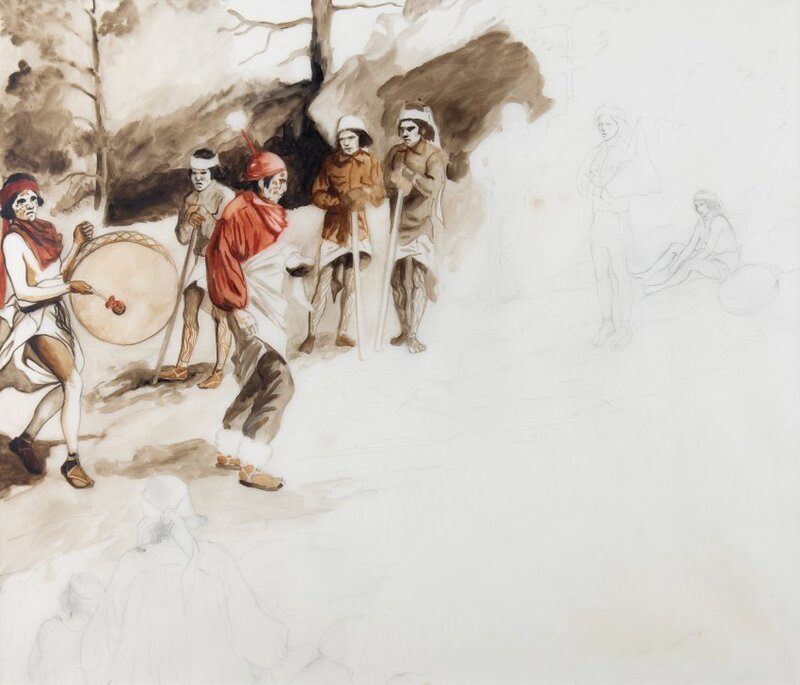Title
Untitled
Creator
Website
Description
Watercolor on vellum, 19 in. x 24 in. In this watercolor, a group of Tarahumara, originally the Rarámuri, participate in a ritual, perhaps the annual “curing” ceremony to assure plentiful rain and a good harvest. Other curing rituals helped to heal tribal members and protect their animals. Here, the shaman wearing a red shirt holds an offering, while behind him the drummer makes music and dances. The Rarámuri once occupied large areas in the Chihuahuan Desert but were driven south by the Spanish settlers looking for precious metals. Primarily farmers, the Rarámuri lived on small farming settlements or “ranchos.” Their original name, Rarámuri, refers to their ability to run long distances. They were never fully assimilated, although many blend Catholic practices with their native religion. In the twenty-first century, their population numbers around 70,000, and they remain fiercely independent. Artist Marta Arat (1932-2002) was born in Ciudad Juarez, Chihuahua, Mexico. She spent most of her adult life along the El Paso-Juárez border, where she studied art at The University of Texas at El Paso. Arat painted her social and spiritual self and created work that experimented with color while mirroring a time and place that reflects the region of the Chihuahuan borderlands. Arat’s work presents images taken from the beauty and diversity of people’s hopes, aspirations and dreams. Marta Arat painted a full spectrum of women, with the belief that women along the US-Mexico border are often overlooked though they are a historic example of life and change. She was a close friend of the El Paso collector Juan Sandoval. Arat was active in the Soñando Juntos organization, an immigrant youth-led organization that empowers borderland immigrant youth through civic engagement. Locally, her first exhibition Life in the Barranca Del Cobre in 1980 was followed by her first group exhibition La Mujer y Su Arte in 1984. Arat’s artwork has been published in magazines, books, and commercially. From Chihuahua, Mexico throughout Texas and to other parts of the region, she has exhibited in museums, galleries and university libraries. Her paintings can be found in many private, corporate, and public museum collections throughout Mexico and the United States.
Subject
Contributor
Access Rights
Mexic-Arte Museum has created and maintains websites and other digital properties to support its mission to enrich the community through education programs, exhibitions, and interpretations of the collection. These Websites include https://mexic-artemuseum.org/ and https://mexicartemuseum.pastperfectonline.com/. This does not mean that Mexic-Arte Museum owns each component of the compilation, some of which may be owned by others and used with their permission or used in accordance with applicable law (e.g., fair use). Mexic-Arte Museum is committed to protecting the intellectual property rights of visual and performing artists and others who hold copyright. Most items in the collection are protected by copyright and/or related rights. Private study, educational, and non-commercial use of digital images from our websites is permitted, with attribution to the Mexic-Arte Museum. Commercial use of any materials on the Mexic-Arte Museum website is expressly forbidden. Users who wish to obtain permission for publication, display, distribution, or other uses of these materials should contact the rights holder(s).
